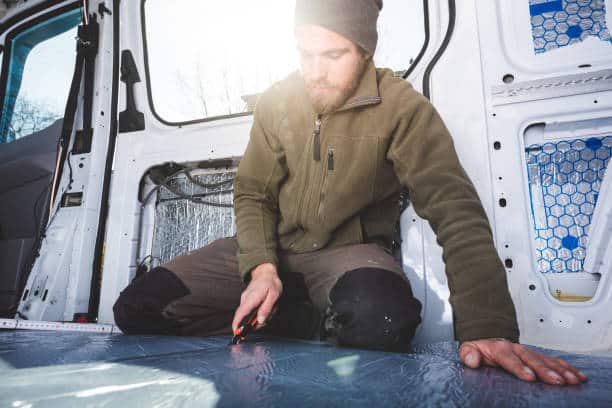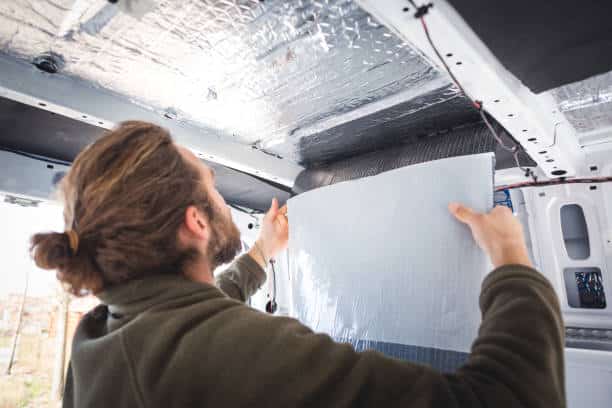If you are planning to camperize your van, one of the first things you should consider is to insulate it properly. Good thermal insulation is essential to travel comfortably at any time of the year, regardless of the weather conditions you face. In this article, we introduce you to some of the most common materials used to insulate your van and their characteristics.
What materials are available to insulate the van?
Before we begin, it is important to remember that the key to good insulation is to use a flexible material that is easy to adapt to the surface of the sheet. The roll or fabric options are particularly interesting in this regard, as they facilitate assembly. Before starting, be sure to clean the surface thoroughly and start at the ceiling or walls, working your way up in sections.
Brown cork
This type of insulation is 100% environmentally friendly and can be easily recycled and renewed. It offers high thermal and acoustic insulation capacity, is breathable and waterproof and prevents condensation. It is also a natural repellent, as it contains suberin, a natural polymer that acts as an insecticide. In other words, it will help you keep bugs away from your van.
Rock wool
It is characterized by its soundproofing and fireproofing properties. It is generally considered to be a good thermal insulator. It is a mineral wool created from volcanic rock. However, it lacks the ability to condense, which means that if water enters the van, it will absorb it and generate humidity. In addition, due to its toxicity, the use of protective equipment such as gloves, masks and goggles is required.
Glass wool
It is a mineral fiber formed by glass filaments bonded together by means of a binder. It is one of the most frequently used insulators, as it resists high temperatures, does not generate smoke or toxic gases and is non-combustible. However, there are doubts about its toxicity level, as the glass fibers may detach and cause irritation in sensitive people. To handle it, the use of protective equipment is also recommended.

Geopanel
It is obtained from the recycling of textile fibers, such as fabric remnants, and is a 100% recyclable material. Its acoustic insulation qualities are among the most valued, and it provides a great deal of comfort. It does not release any type of fiber and does not sting, which makes it ideal for people with allergies. However, it can be more difficult to cut compared to other materials.
Extruded or extruded polystyrene (XPS)
As a thermal insulator, it is excellent. However, as it is obtained in plates, it can be complicated to place in the van, especially in the most curved spaces.
In Camporan we always bring you the best solutions to camperize your van and have your home on wheels always ready whatever your getaway.
Frequently asked questions about camper insulation
What is the best Camper insulation?
The best camper insulation will depend on your needs and preferences. The most common insulators are fiberglass, extruded polystyrene foam, rock wool and polyurethane foam. Each material has different properties and levels of thermal and acoustic insulation, so it is important to research and compare to find the one that best suits your needs and budget.
What fabric is good for heat insulation?
The most common fabric for heat insulation is cotton, as it is breathable and helps to maintain the temperature. There are also specific fabrics for thermal insulation, such as wool, which is excellent for keeping warm in cold temperatures.
What material keeps out the cold?
The most effective insulating materials for keeping out the cold are those with low thermal conductivity, such as polyurethane foam and extruded polystyrene. Mineral wool is also a good choice for this purpose.
Which is better to insulate inside or outside?
Insulating on the inside is more common, as it is easier to do and less expensive. However, insulating on the outside can be more effective, as it prevents heat or cold from penetrating the walls of the structure. In addition, exterior insulation can help prevent moisture and protect the building structure. However, insulating on the outside can be more costly and require more time and effort. The choice between insulating inside or outside will depend on the specific needs of your camper and your budget constraints.


